Assess Your Child's Risk of Developing Myopia (Short-sightedness)
“Nearly Half of the Global Population May Be Myopic by 2050”
– The Brian Holden Institut
Published in American Academy of Ophthalmology 2015
We are facing a myopia epidemic, so it is vital to regularly test your child’s vision!
Myopia is anticipated to become a leading cause of permanent blindness worldwide.
The myopic progression is of great concern for the World Health Organisation (WHO), eye care and general health care professionals, as well as parents. Mounting scientific research indicates that myopia leads to an increased risk of several eye pathologies that may lead to visual impairment or blindness. Researchers and clinicians worldwide are directing their efforts into better understanding the cause and finding the most effective methods to slow down the myopic progression.
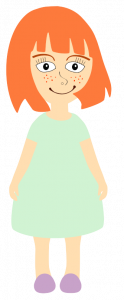
Facts about myopia in children and young adults
- Child myopia is reaching epidemic proportions.
- 60 years ago, 10-20% of the Chinese population was short-sighted. Today, up to 90% of teenagers and young adults are. In Seoul, 96.5% of 19-year-old men are short-sighted.
- In USA and Europe, approx. half of young adults are myopic, double the prevalence of half a century ago.
- Worldwide, it is estimated that 2.5 billion people (roughly 1/3 of the world population) are myopic.
Although there is no cure yet, a number of methods have proven successful at slowing or stopping the rate of progression.
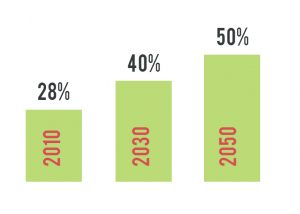
Importance of regular eye tests
It is important that children have regular eye examinations, which can identify early signs of visual or ocular irregularities. Early, customised intervention plans can reduce progression and the associated risks from myopia.
Eye tests are even more critical if one or both parents are short-sighted.
Can the progression of myopia be slowed down?
Clinicians have proven that, using a personalised eye care plan the progression can be significantly slowed down or even stopped.
‘myopia.care™’ is a screening tool designed to support the early detection and correction of myopia reducing the risk of progression and associated eye pathologies. It calculates a probability of your child developing myopia considering factors clinically proven to be associated with it.
‘myopia.care™’ is an innovative platform which makes it easier to predict myopia and connect you with an expert. Our goal is to support parents in slowing and stopping the development of short-sightedness in their children.

How can ‘myopia.care™’ help?
Using a simple questionnaire, it can estimate the level of risk and, if needed, provide you with contact details of a local expert who can help. This allows early intervention, increasing the probability of a successful outcome.
‘myopia.care™’ is a living application, updated regularly on the basis of the latest research.
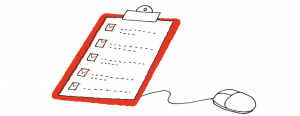
‘myopia.care™’ predictive index
On completion of the questionnaire, a code will be sent to you. Please take this to your chosen eye care practitioner, listed on our website. It enables him to call up the results to use as a basis for commencing a more specialised examination. The results are anonymous. The child can only be identified by the code, and not by name.

Myopia Management
Read also from World Society of Paediatric Ophthalmology & Strabismus
Myopia Consensus Statement 2023
Have your child's eyes tested regularly
It needs regular eye checks to be sure that everything is in order. Especially children get used to a visual impression and learn to live with it. However, it is important that visual defects and malpositions of the eyes are detected and corrected as early as possible. It does not always have to be myopia, why your child does not see clearly and sharp vision does not mean that everything is fine.
Find the right professional (Eye Care Practitioner)
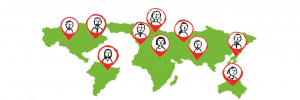
Spend time outdoors
This generation of children are spending less time outdoors.
There is strong evidence that spending more time outside in natural daylight will delay the onset of myopia and reduce the final level of myopia. Studies have also shown that myopic children become more myopic in the winter months than they do in the summer. Shorter periods of natural daylight being cited as the reason. Different studies advocate spending different lengths of time outdoors. Some say as little as 40 minutes a day outside can be of benefit whilst others believe 2 hours a day to be ideal.
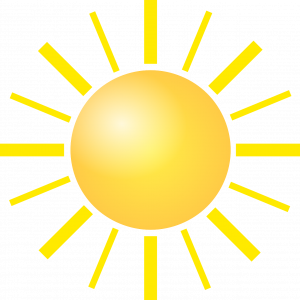
We will report on this as the wealth of knowledge grows and evidence supports lifestyle and a potential nutritional impact on myopia.
Ortho-K (Orthokeratology, Optical Retainers, CRT - Corneal Reshaping Therapy
Ortho-K contact lenses are rigid contact lenses that are worn overnight and may be put on the eye and removed in the morning by parents or the child. During wear, the lenses re-shape the eye surface so that the child can see clearly without spectacles during the following day. Sometimes a top-up pair of glasses may be necessary if, for example, there is a significant amount of astigmatism in the prescription. The resulting corneal shape has been shown to slow the progression of myopia significantly as well as giving spectacle-free daytime vision. Since this method requires special skills and advanced corneal mapping (topography), the Ortho-K contact lenses not all Eye Care Practitioners are able to offer this.
More information about Orthokeratology: www.ok-Info.org

Soft progressive lenses
There are a number of specialist soft lenses (including disposable lenses) which have an altered peripheral focus which has been shown to reduce the one mechanism that drives myopic progression. These are as comfortable to wear as normal soft lenses and are well tolerated by children as young as 6 years of age. A common myth is that children cannot wear lenses. The vast majority of children cope very well with placing the lens on the eye and removing themselves. It is imperative that these are fitted by appropriate professionals and that regular appointments be attended and hygiene routines are strictly adhered to.
A new 1 Day contact lens special designed for Myopia Control is now available in some countries around the world. The MiSight 1 Day contact lens from CooperVision showed good results in a Seven-Year Study. Newer lenses from Abiliti J&J or Bloom 1 Day from Menicon are available in some countries.
Peripheral defocus with spherical and multifocal soft contact lenses
The effect of multifocal soft contact lenses on peripheral refraction.
Multifocal contact lens myopia control.
Efficacy Comparison of 16 Interventions for Myopia Control in Children: A Network Meta-analysis.
Vision Performance With a Contact Lens Designed to Slow Myopia Progression
Atropine eye drops
Atropine eye drops are used by Ophthalmologists during an eye examination to determine the absolute focussing error of an eye. The drug prevents the pupil from getting smaller, therefore it remains large even in bright conditions. It also stops the eye from changing focus for itself, so that after having the drops, near objects appear blurred. In that type of clinical examination, 1% Atropine is used, but studies have shown good results for slowing myopia control with only 0.01% to 0.05% Atropine. This very low concentration has much less of an effect on the blurring of near vision and does not therefore cause any problems for carrying out school work.
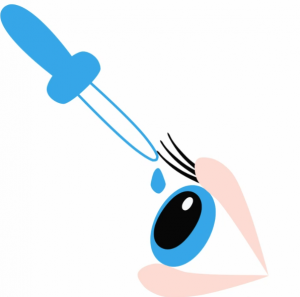
Special spectacle lences
If contact lenses are not an option, then glasses are necessary for clear distance vision. The best effectiveness in the studies was shown by the defocusing lenses (MiYOSMART with D.I.M.S. or Stellest with HAL technology) specially developed for myopia management. The front surface of these lenses contains hundreds of small segments, each of which depicts a myopic defocus. When looking through a pupil-sized area, a sharp and defocused image is thus always guaranteed in the eye. At the same time, the structure of the lens allows the extraordinary longitudinal growth of the eye to be slowed down and provides clear vision.
Bifocal glasses (clear distant vision on top, reading vision on the bottom) or progressive addition lenses (PALs) may have a slight advantage for reducing myopia over ‘ordinary’ single vision distance glasses. The current literature suggests this is the least effective of all the myopia control methods. Spectacle lens manufacturers are researching specially designed myopia control lenses. Currently these are only available in some countries and evidence suggests customised spectacle lenses offer only a ‘moderate effectiveness’ in slowing myopia.
These lenses can be of use as part of a combined approach to myopia control. ‘myopia.caretm’ is committed to delivering a complete range of treatments and will
advise professionals on a care plan that have an evidence based approach using the full range of accredited strategies and products.

